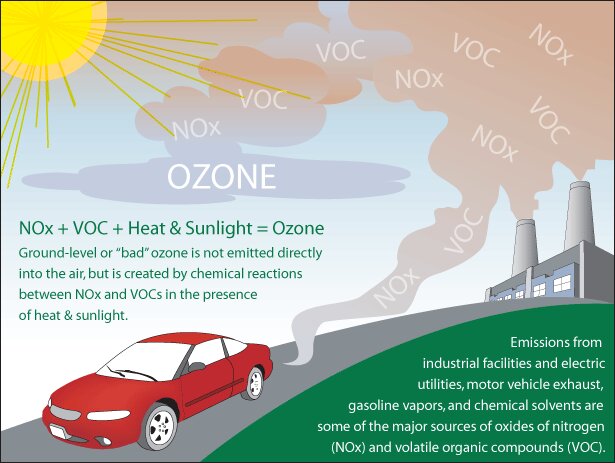Biodiversity & Environment
Ozone Pollution
- 29 Jun 2019
- 3 min read
According to the data presented by the Ministry of Environment, Forest and Climate Change in the Lok Sabha, ozone was reported as a prominent pollutant (for 95 days between 2016 and 2018) in Delhi (contributing to rising air pollution in Delhi).
- Delhi has witnessed 122 micrograms per cubic metre (ug/cu m) of ozone pollution which is 1.22 times higher than the eight-hour average standard which is 100 ug/cu m.
Ozone
Ozone (composed of three atoms of oxygen) occurs both in the Earth's upper atmosphere (stratosphere) and at ground level ( troposphere). It can be good or bad, depending on where it is found:
- Good Ozone: Ozone occurs naturally in the Earth's upper atmosphere (Stratosphere) where it forms a protective layer that shields us from the sun's harmful ultraviolet rays.
- Ozone depleting gases like chlorofluorocarbons (CFCs), HCFCs, halons, destroy this protective shield and causes hole in the ozone.
- India had adopted the Kigali Amendment (aims to phase-down hydrofluorocarbons).
- Bad Ozone: In the Earth's lower atmosphere (troposphere) near ground level, ozone is formed when pollutants emitted by cars, power plants, industrial boilers, refineries, chemical plants, and other sources react chemically in the presence of sunlight.
- Surface level Ozone is a harmful air pollutant.
Impacts of Ozone Pollution 
- Surface level Ozone causes damage to crops and forests.
- Irritation can occur in the respiratory system giving rise to coughs and an uncomfortable sensation in the chest.
- Ozone worsens bronchitis, emphysema, asthma, etc and increases the risk and susceptibility to pulmonary inflammation like Chronic Obstructive Pulmonary Disease (COPD).
- It may reduce lung function and make breathing difficult.
Government Efforts
- Shifting to BS-VI compliant vehicles from BS-IV.
- Shutting down of the Badarpur thermal power plant.
- Banning of garbage burning.
- Graded Response Action Plan (GRAP).
- Launch of the National Clean Air Programme (NCAP).
- Setting up of a monitoring network for assessment of the ambient air quality at 779 locations, covering 339 cities in 29 states and six Union territories






